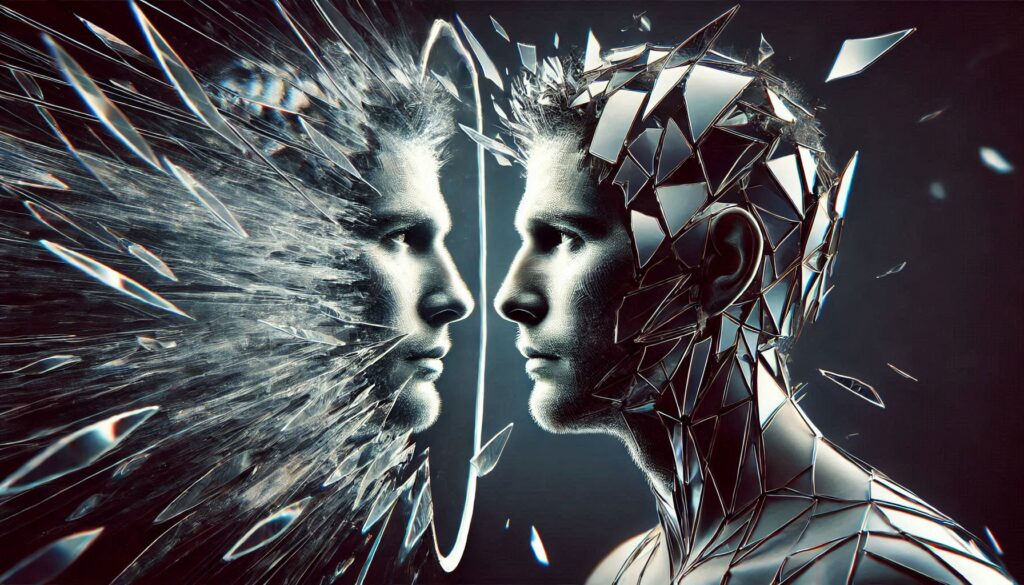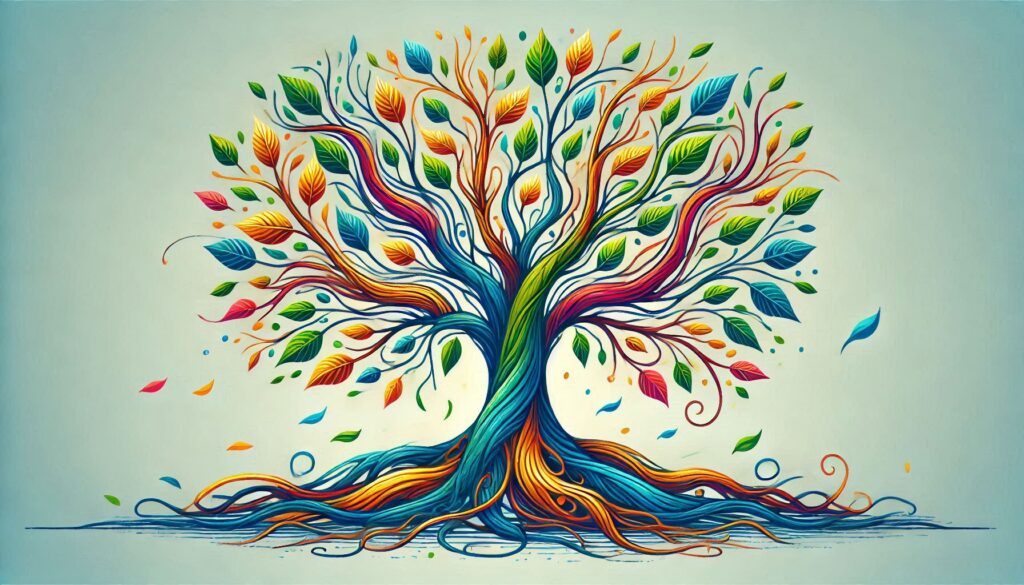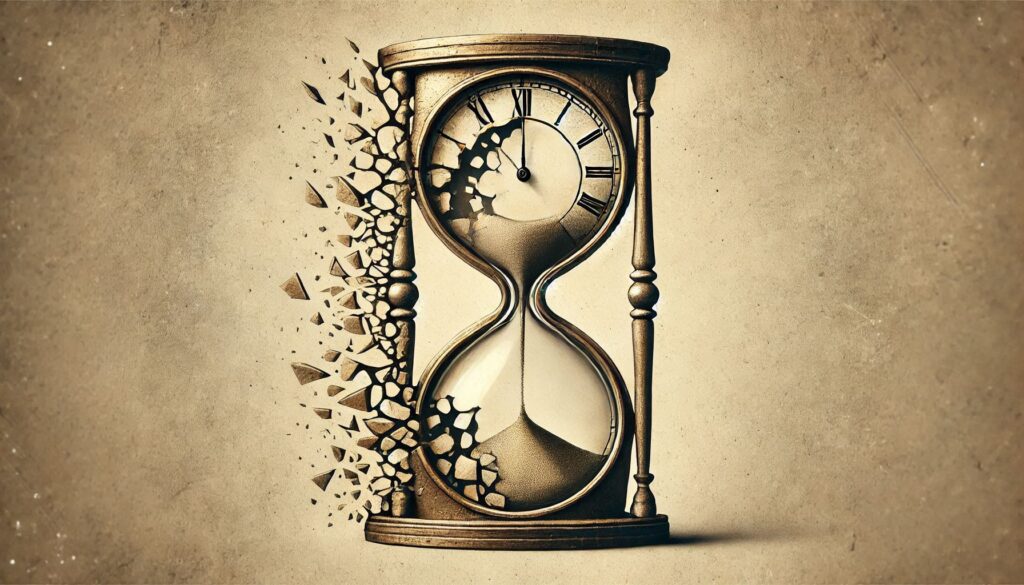
Introduction: Exploring the Concept of Personal Timelines
What if the past I believed to be true wasn’t? Does it still matter? This seemingly simple question can open the door to a deeper understanding of how we relate to our own memories and construct the narratives of our lives. Our memories are not static, nor are they definitive accounts of the past. They are constantly evolving, shaped by our current beliefs, emotions, and the ever-changing information that enters our lives. This fluidity in memory leads us to reconsider the relationship between memory and reality, and how our perception of reality is shaped by these fluid memories.
Memory is not a fixed point of reference, but rather a dynamic landscape that shifts over time. What we remember—or think we remember—may be an incomplete or altered version of past events, colored by the lens of our present circumstances. The past, in this light, is not a singular, unchangeable entity; it is malleable and open to reinterpretation. This raises the intriguing idea that our personal reality—the story we tell ourselves about who we are and where we’ve been—isn’t necessarily fixed. It can change with each new layer of understanding we gain about ourselves and the world around us.
In this context, the concept of parallel timelines emerges as a fascinating way to explore the multiplicity of our personal histories. Imagine that every shift in memory, every new belief or revelation, could potentially give rise to a new timeline—one that runs parallel to the old one, creating a more complex and multifaceted view of our existence. In the following sections, we will delve deeper into this idea of personal timelines, and how our perception of reality is intricately tied to the fluidity of memory.

Memory as a Construct of Personal Reality
Memory is often regarded as a reliable record of past events, but in reality, it is far from perfect. Our memories are not pristine snapshots of the past but rather reconstructed versions of experiences shaped by a multitude of factors—emotions, biases, and perception. The mind takes pieces of the puzzle, fills in the gaps, and weaves them into a cohesive story. This process, while essential to how we make sense of the world, often leads to memories that are not entirely accurate, yet still feel profoundly real to us. In this sense, memory is not merely a reflection of the past, but a dynamic construct that shapes our personal reality.
The idea that memory can be imperfect is well established in cognitive psychology. The brain doesn’t store memories like a file cabinet; rather, it encodes, consolidates, and reconstructs them each time we recall them. This means that memories are not fixed entities but fluid representations of what we believe to be true. When we think back to a significant event—be it a childhood experience, a conversation, or a moment of triumph—we aren’t retrieving a complete and unaltered version of the past. Instead, we are reconstructing it from fragments of information stored in various parts of the brain. This process is influenced by our emotional state, the context in which the memory is recalled, and even external factors like conversations with others or media consumption.
Emotions play a pivotal role in shaping the way we remember events. The more emotionally charged an experience is, the more likely it is to be encoded into memory with vivid detail. However, these emotional elements can also distort the accuracy of a memory. For example, a person who experiences a traumatic event might remember every detail as though it were etched in stone—yet, over time, certain elements of that memory might be exaggerated or misrepresented. Conversely, positive or neutral memories might fade or become less distinct as emotions surrounding the event become less intense. This selective memory phenomenon can lead to an internal reality that feels deeply true, even if it doesn’t fully align with the actual events.
One of the most fascinating aspects of memory is that the emotional truth of a memory can remain intact, even if the factual details are not accurate. For example, a person might remember a family vacation as the happiest time of their life, but when they revisit the details, they realize the trip was far from perfect. Despite the imperfections in the factual timeline, the emotional resonance of the experience—the joy, the connections made, the feelings of togetherness—remains powerful. This emotional truth shapes their narrative of the past, regardless of its factual accuracy.
Cognitive psychology has demonstrated that memory is not a passive process but an active one. Our brains continuously reconstruct and reinterpret the past based on new experiences and information. This explains phenomena like the Mandela Effect, where large groups of people remember events or details differently than they actually occurred. The Mandela Effect, named after the false memory some people have of Nelson Mandela dying in the 1980s, illustrates how entire groups of people can share a false memory, creating a collective but inaccurate personal reality. Similarly, false memories—where individuals recall events that never happened—can be implanted or formed through suggestion, further demonstrating the malleability of memory.
Ultimately, memory is not a mere recording of objective reality. It is a dynamic and subjective process that helps us create a coherent sense of self and continuity. Our personal reality is built from these memories, imperfect as they may be, and shaped by the emotional truths we hold dear. Even when our recollections differ from the reality of an event, the feelings and perceptions we attach to those memories define our personal truths, influencing our present selves and the stories we tell about who we are.

The Concept of Parallel Timelines and Personal Growth
The notion of parallel timelines invites us to reconsider how our past, present, and future are intertwined. What happens when you gain new information—information that challenges your current understanding of past events? In that moment, you are presented with a choice: to integrate this new knowledge and revise your perspective, or to hold on to the version of the past you have always known. This decision, though seemingly simple, can lead to the creation of a new timeline—a branching point where your perception of the past changes and a new version of your personal reality begins. This branching timeline, though distinct, exists alongside the old one in your memory, allowing you to exist in multiple realities simultaneously. Each timeline, though different, contributes to who you are today, shaping the person you have become.
In many ways, this concept mirrors the idea of quantum mechanics and the many-worlds interpretation. The many-worlds theory posits that every choice or change in information spawns a new parallel universe, each containing its own version of reality. Similarly, every shift in memory or new understanding creates a new timeline in our personal reality, one that coexists with the old one. In quantum mechanics, all these timelines exist concurrently, each just as real as the others, even if we only perceive one at a time. If we apply this to human experience, we begin to see that our lives may not be a linear narrative, but rather a web of interconnected paths, each representing different facets of who we are.
For example, imagine a person who has always believed a particular relationship was healthy and fulfilling, only to learn years later that their partner had been dishonest or manipulative. The revelation of this truth forces them to reframe the entire relationship—what they thought was love might now seem like control, and what they once cherished could now appear like an illusion. This shift is not just intellectual; it has emotional and psychological implications, as the person integrates the new knowledge into their sense of self. The timeline they had lived up until that point still exists in memory, but now, there’s a new timeline: one where the truth of the relationship has reshaped their perspective, and the way they move forward is altered by this new reality.
This branching process doesn’t erase the old timeline. Instead, it layers it with new information, creating a more nuanced understanding of the self. The person is still the same, but now, they are navigating through a different version of their life—a version informed by the new truths they have uncovered. The previous timeline, though no longer the present, still exists in memory and continues to shape their behavior and emotions. In this sense, both the old and new timelines coexist, influencing the way they perceive the present moment and guide their future decisions.
This phenomenon is not limited to major revelations like the one mentioned above. Even small shifts in perspective—such as learning new information, having a conversation, or simply gaining a new insight—can create a branching timeline. Each moment of change, no matter how subtle, contributes to the complexity of the self, providing a deeper understanding of who we are and how we relate to the world around us.
Psychologically, living in multiple timelines presents both challenges and opportunities. On one hand, the integration of new perspectives can lead to cognitive dissonance—the discomfort of holding two conflicting beliefs or realities. On the other hand, this process can foster personal growth, as we adapt to and reconcile different versions of ourselves. The integration of new timelines requires us to navigate the tension between our past and present selves, embracing the contradictions and learning from them.
Consider a hypothetical scenario where someone is confronted with the truth about a family member’s past actions, which they had long idealized. This truth may create a rupture in their personal timeline, forcing them to reassess their relationship with that person. Yet, this shift also offers an opportunity for growth. By reconciling the past with the new understanding, they can evolve into a more compassionate, realistic version of themselves, no longer bound by an idealized vision but embracing a fuller, more authentic perspective.
Each new timeline, whether formed by a major revelation or a subtle shift, is a valuable part of the self’s journey. Just as the branches of a tree create a complex, interconnected whole, our multiple timelines contribute to the intricate, evolving story of who we are. In this light, the concept of parallel timelines becomes a metaphor for personal growth, reminding us that our identity is not fixed, but continuously shaped by the interplay of past experiences, present knowledge, and future possibilities.

Reinterpreting the Past: How "Fake" Experiences Can Still Have Real Value
What happens when you learn that an event you’ve long believed to be true wasn’t actually real? Perhaps you were certain a relationship had unfolded a particular way, or you convinced yourself of a past experience that now seems fabricated. When the truth emerges, you are suddenly faced with the reality that your memory of the past has been altered. This revelation pushes you into a new timeline, where the past is no longer as you once knew it. Yet, despite the shift in factual accuracy, the emotional impact of that experience remains. The feelings, lessons, and personal growth derived from those experiences are real, and they continue to shape you even after the truth comes to light.
This paradoxical reality—where the emotional truths of “fake” experiences retain their value—is central to understanding how we reinterpret our pasts. When we discover that an event was not true, we often find ourselves grappling with confusion, disbelief, or even regret. However, the emotional lessons we’ve learned from these experiences are not rendered invalid by their inaccuracy. Whether the event actually occurred as we believed or not, the feelings of joy, pain, betrayal, or empowerment were real at the time and had a profound effect on our growth. These “fake” experiences still serve as crucial turning points in our lives, even though the factual details may now seem questionable or incorrect.
Reinterpreting these experiences involves reframing our understanding of what constitutes valuable knowledge. Many of us tend to view “mistakes” or “false beliefs” as failures—missteps that we should have avoided. But what if we reframed these instances as opportunities for growth? Mistakes are often seen as deviations from the right path, but they also serve as lessons, teaching us about our resilience, our ability to adapt, and the depth of our emotional capacities. Even if the circumstances surrounding those experiences weren’t real, the personal development that arose from them is.
For example, imagine believing that a particular job opportunity was a career-defining moment, only to later learn that the company had been dishonest about the position’s prospects. The realization that the job wasn’t what you thought it was may initially feel like a setback. But looking at it from another perspective, you can appreciate the confidence and skills you developed while pursuing that opportunity. The emotional growth—the drive, the ambition, and the ability to overcome disappointment—remains with you, shaping how you approach future challenges.
Philosophically speaking, one might ask: Is all knowledge valid, even if it’s built on misconceptions? In a traditional sense, we might say that knowledge based on falsehoods is inherently flawed. However, when it comes to personal experience, the emotional truth behind a belief can be just as significant as the factual accuracy. If the knowledge we gain through “fake” experiences helps us understand our emotional landscape, our reactions to challenges, and our potential for growth, then perhaps this knowledge is just as valid as the “real” thing. Our personal realities, shaped by both true and false experiences, are constructed from the wisdom we derive from them—wisdom that often transcends the details of the events themselves.
Ultimately, accepting the emotional truth of a “fake” experience can be a powerful way to move forward. It allows us to acknowledge that while the past may not have unfolded exactly as we imagined, the emotional resonance it created is what has propelled us toward personal growth. These moments, whether factual or not, become valuable parts of our journey, providing us with the tools to navigate life with a greater sense of self-awareness and resilience. By embracing the lessons embedded in these experiences, we transform them from potential sources of regret into sources of empowerment, redefining how we view our past and, consequently, our future.

The Power of Embracing a New Timeline: Personal Growth and Liberation
There is a unique kind of freedom that comes from accepting the fluidity of time and memory. When we recognize that our past is not fixed, but instead, it exists in multiple timelines—each shaped by new information, shifting perspectives, and evolving beliefs—we release ourselves from the burden of holding on to outdated versions of reality. This acceptance allows us to forgive ourselves for past misunderstandings or false beliefs, and to embrace the idea that personal growth is not linear, but cyclical and transformative.
When we embrace the notion of multiple timelines, we are no longer trapped by regret or guilt about the past. It’s easy to get caught in the idea that the past mistakes or missed opportunities have defined us, but recognizing that we are always capable of entering a new timeline offers liberation. Each new moment of insight, each fresh perspective, creates a new version of our reality, where the weight of past errors does not dictate our present or future. We can leave behind the emotional baggage that once held us back, knowing that we have the agency to move forward into a better, more evolved version of ourselves.
However, embracing a new timeline doesn’t mean erasing the past. It means honoring it while fully stepping into the present moment. The key is to accept that we are always evolving—becoming more than who we once were, but still carrying the wisdom from our previous selves. By living in the “now,” we can navigate the future with greater openness and adaptability, unburdened by outdated beliefs or perceptions. This presence allows us to make conscious decisions, align with our true desires, and act with clarity and purpose.
Psychologically, this shift brings immense benefit. By forgiving ourselves for the misunderstandings of the past, we release ourselves from self-imposed guilt and create space for self-compassion. We learn to view our past mistakes not as failures but as integral parts of our journey—steps that were necessary for our growth and evolution. This mindset fosters emotional freedom and encourages a more positive relationship with both our past and our future.
Ultimately, the multiple timelines we navigate are not a reflection of mistakes but of personal evolution. Each timeline is a testament to the ways we have transformed, adapted, and grown into the people we are today. The freedom lies in understanding that our stories are not fixed—they are constantly unfolding, allowing us to rewrite our narratives and embrace a future full of possibility.

Conclusion: The Ever-Evolving Nature of Self
Our personal timelines are not static; they are continuously shifting as we gain new information, experiences, and insights. Each moment of change, each new perspective, creates a new version of ourselves, contributing to a dynamic, ever-evolving understanding of who we are. This fluidity of time and memory reminds us that our past is not fixed—it is shaped by the lens through which we view it, and that lens is always subject to change.
Every version of yourself, no matter how different it may seem from your current self, is valid. The person you were at one point in time, with all your misunderstandings and incomplete truths, played a vital role in shaping the person you are now. It’s essential to embrace this idea, knowing that who you were, even if it feels distant or flawed, was a necessary part of your growth and evolution. Each phase of your life has contributed to your present self, and each version of you is deserving of compassion.
Looking at your past with curiosity, rather than judgment, allows you to better understand your present self. It offers an opportunity to reflect on the lessons learned, the changes made, and the ways you’ve grown. By embracing this evolving nature of self, you can move forward with greater confidence, openness, and the understanding that your journey is far from linear—it is a collection of many timelines, each adding depth to the person you are becoming.
